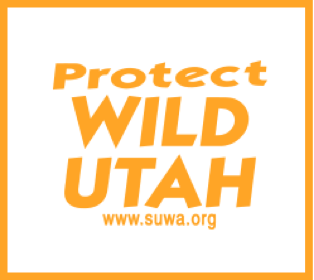|
For Immediate Release NOVEMBER 13, 2007 Contacts:
Bush Administration's Newest Strategy for Public Lands Decimates BLM Roadless Areas
The new management strategies would apply to six BLM “field offices” encompassing 11 million acres in Utah’s red rock canyon country, or nearly half of the BLM lands in the entire state. Much of this land -- a total of 5,388,940 acres -- is proposed for wilderness designation in America’s Red Rock Wilderness Act, now pending before Congress. These lands include roadless areas near Canyonlands, Zion and Arches National Parks, with iconic red sandstone spires, 1,000-foot cliffs, high plateaus and meandering, narrow canyons (see photo album).
According to Heidi McIntosh of the Southern Utah Wilderness Alliance, “the scope of the attack on these red rock canyons and plateaus is breathtaking. This administration is pushing hard to scar these lands with roads and oil fields, and to take away from Congress its prerogative to preserve these special areas for the benefit of future generations. It will leave a devastating legacy for not just Utahns but for all Americans who love these landscapes.” “Suddenly, the rush is on and the BLM is sending a message that there is not a lot of interest in slowing down to hear from the public,” said Nada Culver, of The Wilderness Society, noting that there are 6 overlapping, 90-day comment periods, in which the public is to read, understand and make constructive suggestions on these documents, all of which are due in a five-week period over the end of the year. “The scope and scale of what is at stake here really merits more time and consideration.” BLM’s historic failure to protect these areas from roads and ORV damage spurred 93 congressional representatives to send a letter to Interior Secretary Dirk Kempthorne asking him to protect the lands BLM found to have wilderness character. Secretary Kempthorne, who received the letter on October 30, 2007, has not yet responded.
“These new routes were proposed by ORV groups and local elected officials seeking to maximize roads and minimize land protection,” said SUWA’s Liz Thomas. “BLM adopted these requests nearly wholesale as the basis for the agency’s new ORV route plans despite concerns about impacts to archaeological sites, conflicts with other uses, and damage to wildlife habitat, streams and water quality.” Referring to the BLM’s intent to open Utah’s famous canyon landscape to oil and gas development, Culver notes that “rushing to open lands to leasing without careful consideration has not served the BLM or the public well.” Over the past several years, the Utah BLM has been directed by courts to reassess decisions to issue oil and gas leases in sensitive areas, and has also made internal decisions to grant protests and remove parcels from sales. In terms of managing the effects of leasing on the ground, a 2005 report from the General Accounting Office found that “Increased Permitting Activity Has Lessened BLM's Ability to Meet Its Environmental Protection Responsibilities.'' Wilderness-quality lands also would be decimated by the new management strategy, adds Thomas, because more than 2.8 million acres of land the BLM acknowledges has wilderness character would be open for roads, ORVs and oil and gas drilling. Most BLM offices would protect none of the wilderness lands BLM found to qualify for formal protection under the Wilderness Act. Visit SUWA's Resource Management Plan page for summaries of the new management strategies, links to the BLM documents, and photos of the areas affected.
|
|
|
|||

 Southern Utah Wilderness Alliance
Southern Utah Wilderness Alliance
Protecting Utah's Redrock Country



